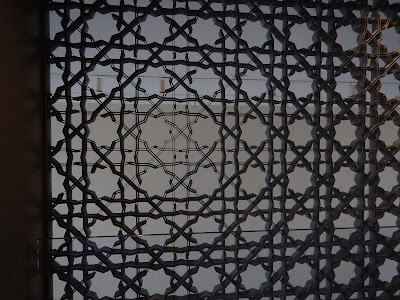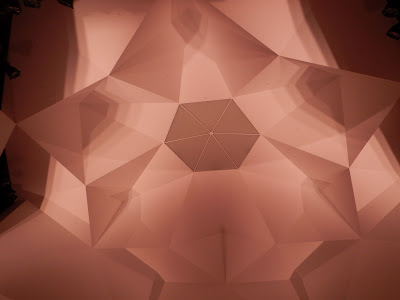Things are happening quickly, but I've been tied up with various health maintenance issues and have not been able to keep up. It would help if I could sleep, but that has been beyond my reach for most of the past week. Since multistability is in the purview of this blog, we may consider consciousness to have several metastable equilibrium states, some of which lie in the realm of sleep, and some of which lie in the realm of wakefulness. I am stuck in the one best characterized as "tired and wired". To go to sleep I have to leave one metastable equilibrium and migrate to one in the sleep portion of state space. Unfortunately, it is as if I have forgotten how.
Two stories that are of interest to me and (I think) are somewhat related are the decision by Teck Resources to withdraw its application for development of its proposed Frontier Mine oilsands project.
The company cites the inability of government (Canada) to square the circle with its stated objectives of mitigating climate change and supporting resource development.
The government had been preparing to announce a decision about the project shortly. Now it seems they no longer need to.
Coincidentally, this morning police moved in to disperse protesters around the rail blockade in Tyendinaga. The RCMP also moved in on Unist'ot'en territory in northern BC, presumably to disperse protestors there as well. I haven't seen statements by the protestors and their allies about the reason for this move, but I suspect it has to do with the Canadian government's inability to square the circle with its stated objective of native reconciliation and a (subtly) unstated objective of ensuring corporate profitability.
This move, to me, looks like it was to signal the government's intention to approve the project. Until Teck decided to discontinue the project
The Teck decision, I think, is based on rather more than has been stated. Years ago I owned a pile of shares in an entity called Fording Coal, which in its brief life made a respectable amount of money, no doubt leading Teck to buy out Fording's stake in the Elk Valley project. In reflecting on Teck's assets--a lot of coal, oil, and oilsands projects--and I couldn't help wondering whether somebody in management might be thinking about a need to scale back on carbon-intensive energy products. That perhaps someone in management might be thinking that it is better to sell off these components of the company, because their value may shortly begin to fall, and the longer they wait, the less they will get for them. I think this viewpoint must still be a minority viewpoint within the company, but it is there nonetheless.
From an economic standpoint, the rise of e-cars (much of which is going to be legislated), means lower sales of oil products going forward. Is now the time to be developing large oil sands mines--especially given the political uncertainty around developing pipelines to take the stuff to market?
Two stories that are of interest to me and (I think) are somewhat related are the decision by Teck Resources to withdraw its application for development of its proposed Frontier Mine oilsands project.
The company cites the inability of government (Canada) to square the circle with its stated objectives of mitigating climate change and supporting resource development.
The government had been preparing to announce a decision about the project shortly. Now it seems they no longer need to.
Coincidentally, this morning police moved in to disperse protesters around the rail blockade in Tyendinaga. The RCMP also moved in on Unist'ot'en territory in northern BC, presumably to disperse protestors there as well. I haven't seen statements by the protestors and their allies about the reason for this move, but I suspect it has to do with the Canadian government's inability to square the circle with its stated objective of native reconciliation and a (subtly) unstated objective of ensuring corporate profitability.
This move, to me, looks like it was to signal the government's intention to approve the project. Until Teck decided to discontinue the project
The Teck decision, I think, is based on rather more than has been stated. Years ago I owned a pile of shares in an entity called Fording Coal, which in its brief life made a respectable amount of money, no doubt leading Teck to buy out Fording's stake in the Elk Valley project. In reflecting on Teck's assets--a lot of coal, oil, and oilsands projects--and I couldn't help wondering whether somebody in management might be thinking about a need to scale back on carbon-intensive energy products. That perhaps someone in management might be thinking that it is better to sell off these components of the company, because their value may shortly begin to fall, and the longer they wait, the less they will get for them. I think this viewpoint must still be a minority viewpoint within the company, but it is there nonetheless.
From an economic standpoint, the rise of e-cars (much of which is going to be legislated), means lower sales of oil products going forward. Is now the time to be developing large oil sands mines--especially given the political uncertainty around developing pipelines to take the stuff to market?

















